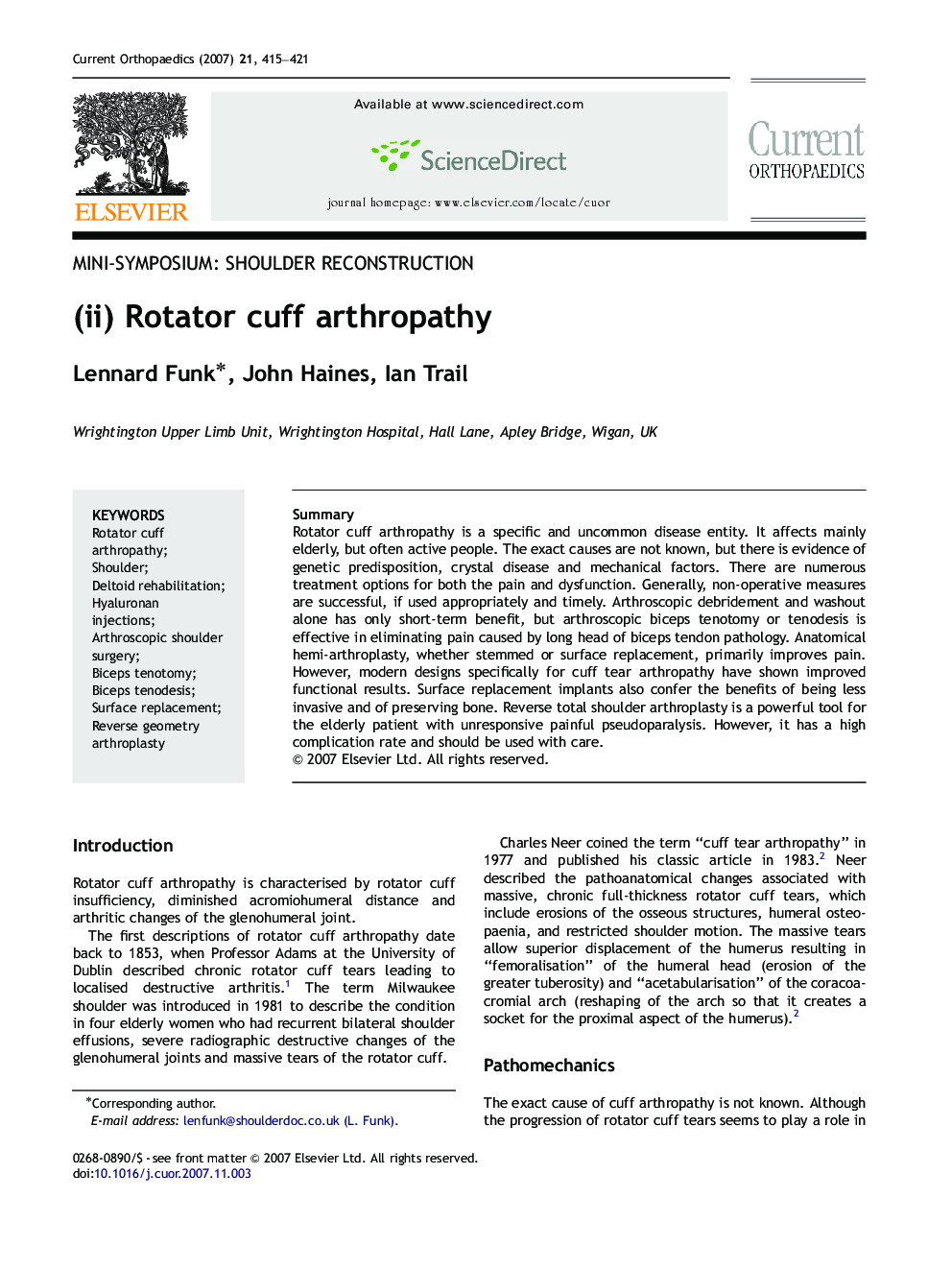| Article ID | Journal | Published Year | Pages | File Type |
|---|---|---|---|---|
| 4052801 | Current Orthopaedics | 2007 | 7 Pages |
Abstract
Rotator cuff arthropathy is a specific and uncommon disease entity. It affects mainly elderly, but often active people. The exact causes are not known, but there is evidence of genetic predisposition, crystal disease and mechanical factors. There are numerous treatment options for both the pain and dysfunction. Generally, non-operative measures are successful, if used appropriately and timely. Arthroscopic debridement and washout alone has only short-term benefit, but arthroscopic biceps tenotomy or tenodesis is effective in eliminating pain caused by long head of biceps tendon pathology. Anatomical hemi-arthroplasty, whether stemmed or surface replacement, primarily improves pain. However, modern designs specifically for cuff tear arthropathy have shown improved functional results. Surface replacement implants also confer the benefits of being less invasive and of preserving bone. Reverse total shoulder arthroplasty is a powerful tool for the elderly patient with unresponsive painful pseudoparalysis. However, it has a high complication rate and should be used with care.
Keywords
Related Topics
Health Sciences
Medicine and Dentistry
Orthopedics, Sports Medicine and Rehabilitation
Authors
Lennard Funk, John Haines, Ian Trail,
